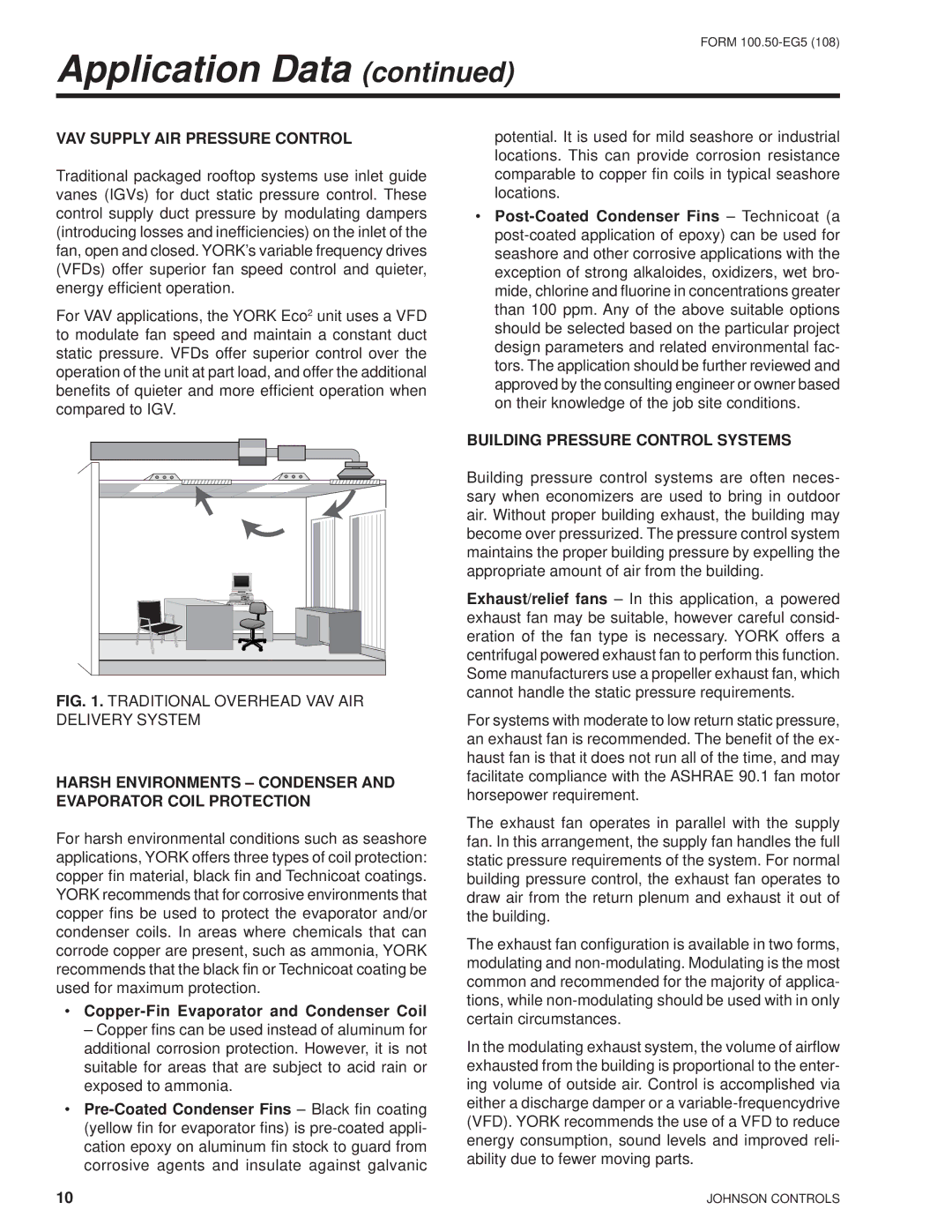
FORM
Application Data (continued)
VAV SUPPLY AIR PRESSURE CONTROL
Traditional packaged rooftop systems use inlet guide vanes (IGVs) for duct static pressure control. These control supply duct pressure by modulating dampers (introducing losses and inefficiencies) on the inlet of the fan, open and closed. YORK’s variable frequency drives (VFDs) offer superior fan speed control and quieter, energy efficient operation.
For VAV applications, the YORK Eco2 unit uses a VFD to modulate fan speed and maintain a constant duct static pressure. VFDs offer superior control over the operation of the unit at part load, and offer the additional benefits of quieter and more efficient operation when compared to IGV.
FIG. 1. TRADITIONAL OVERHEAD VAV AIR DELIVERY SYSTEM
HARSH ENVIRONMENTS – CONDENSER AND EVAPORATOR COIL PROTECTION
For harsh environmental conditions such as seashore applications, YORK offers three types of coil protection: copper fin material, black fin and Technicoat coatings. YORK recommends that for corrosive environments that copper fins be used to protect the evaporator and/or condenser coils. In areas where chemicals that can corrode copper are present, such as ammonia, YORK recommends that the black fin or Technicoat coating be used for maximum protection.
•Copper-Fin Evaporator and Condenser Coil
– Copper fins can be used instead of aluminum for additional corrosion protection. However, it is not suitable for areas that are subject to acid rain or exposed to ammonia.
•
potential. It is used for mild seashore or industrial locations. This can provide corrosion resistance comparable to copper fin coils in typical seashore locations.
•
BUILDING PRESSURE CONTROL SYSTEMS
Building pressure control systems are often neces- sary when economizers are used to bring in outdoor air. Without proper building exhaust, the building may become over pressurized. The pressure control system maintains the proper building pressure by expelling the appropriate amount of air from the building.
Exhaust/relief fans – In this application, a powered exhaust fan may be suitable, however careful consid- eration of the fan type is necessary. YORK offers a centrifugal powered exhaust fan to perform this function. Some manufacturers use a propeller exhaust fan, which cannot handle the static pressure requirements.
For systems with moderate to low return static pressure, an exhaust fan is recommended. The benefit of the ex- haust fan is that it does not run all of the time, and may facilitate compliance with the ASHRAE 90.1 fan motor horsepower requirement.
The exhaust fan operates in parallel with the supply fan. In this arrangement, the supply fan handles the full static pressure requirements of the system. For normal building pressure control, the exhaust fan operates to draw air from the return plenum and exhaust it out of the building.
The exhaust fan configuration is available in two forms, modulating and
In the modulating exhaust system, the volume of airflow exhausted from the building is proportional to the enter- ing volume of outside air. Control is accomplished via either a discharge damper or a
10 | JOHNSON CONTROLS |
